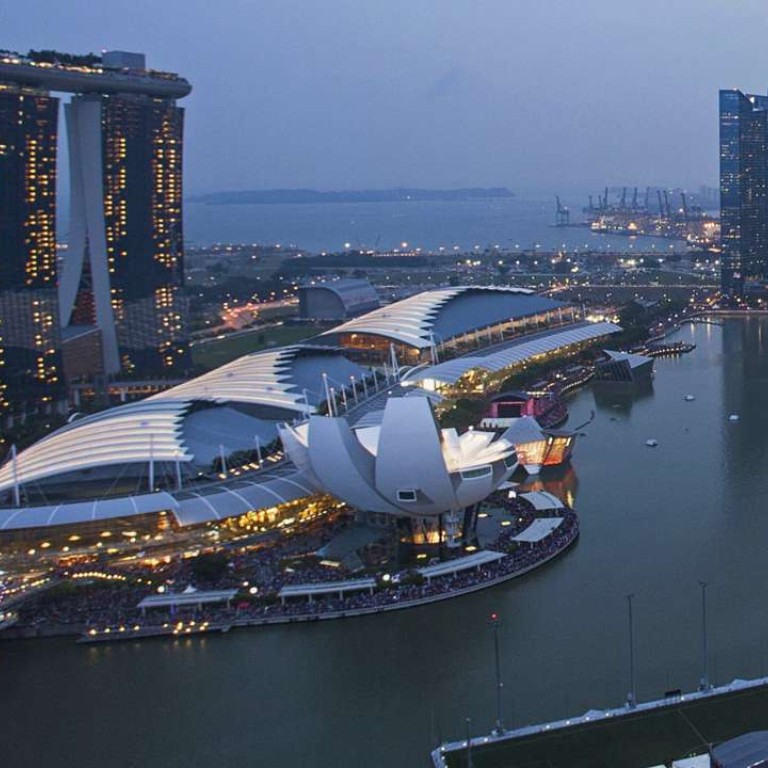
Tale of two cities: bilateral trade and investment continue to flourish between Singapore and Hong Kong
Singapore is Hong Kong’s eighth largest export market, and remains its most important trading partner within Asean
Singapore and Hong Kong are linguistically and culturally primed to take advantage
of the economic giant that is mainland China.
The Lion City and Hong Kong are more alike than they are different, and bilateral trade
and investment continues to flourish.
Singapore is Hong Kong’s eighth largest export market, and it remains its most important trading partner within Asean.
Last year, Hong Kong’s exports to Singapore rose 2.3 per cent to slightly less than US$7.5 billion. Major export items included semiconductors, electronic valves and tubes, telecoms equipment and parts, computers, non-electric engines and motors, and jewellery.
By contrast, Singapore is Hong Kong’s fourth largest source of imports. Imports from Singapore dropped slightly to US$31.52 billion in 2015. Major imports included petroleum products and parts and accessories for office machines and computers.
“Singapore continues to be heavily involved in the Hong Kong economy, and is particularly well represented in the finance, logistics, electronics and information communications technologies and similar services sectors,” says Nicholas Kwan, director of research at the Hong Kong Trade Development Council.
“Prominent examples include the DBS [Bank], Overseas-Chinese Banking Corporation, United Overseas Bank, Keppel Logistics, Singapore Airlines, Pacific International Lines,
and Singapore and Technologies Electronics.”
By the end of last December, Singaporean companies had established 42 regional headquarters, 93 regional offices and 222 local offices in Hong Kong.
As one of Southeast Asia’s financial hubs and one of the region’s major electronics and biomedical manufacturing bases, Singapore welcomes foreign direct investment (FDI). As a sweetener, it provides investment inducements such as development and expensing incentives as well as corporate income tax exemptions.
Singapore’s cumulative FDI had reached US$753 billion by the end of last year, an increase of 18 per cent over the previous year. The top five FDI sources included the United States, the Netherlands, the British Virgin Islands, Japan, and Britain.
The cumulative FDI of Hong Kong and mainland China in Singapore reached US$31.6 billion and US$12.2 billion, respectively, as at end of 2014, showing healthy growth of 24.8 per cent and 0.9 per cent over the year.
Singapore’s Economic Development Board (EDB) has forecast that the level of FDI for this year will remain moderate at about US$5.6 billion, also noting that the US accounted
for just over 60 per cent of the city state’s FDI in 2015.
Singapore’s economy is in fine fettle, and a promising prospect for Hong Kong investors. Singapore’s services sector contributes around three quarters of the country’s GDP, with the finance and insurance, wholesale and retail trade and business services sectors acting as the main impetus to growth.
Singapore continues to be heavily involved in the Hong Kong economy, and is particularly well represented in the finance, logistics, electronics and information communications technologies
The industrial sector – mainly electronics, biomedical, petroleum and petrochemicals – accounts for the remainder of GDP, as agriculture contributes less than 1 per cent.
After expanding marginally in 2015, Singapore’s GDP grew 1.8 per cent in the first quarter of this year as the manufacturing sector contracted, weighed down by the output loss in the transport engineering and electronics sectors. GDP growth for the rest of the year is expected to maintain a similar rate.
Last year, Singapore’s manufacturing, construction, utilities and other goods industries accounted for about a quarter of GDP.
The sector contracted by 3.4 per cent in 2015 due to a decline in manufacturing output.
This year’s budget reiterated the importance of transforming Singapore’s economy through enterprise and innovation.
A new Industry Transformation Programme will place more emphasis on technology adoption and innovation, while a Business Grants Portal is due to start assisting enterprises according to their core business needs by the end of this year.
Singapore has made strenuous efforts to develop its meetings, incentives, conventions and exhibitions industry. According to the latest assessment by the International Congress and Convention Association, Singapore has retained its spot as the Asia’s Top Convention City for more than 10 years.
With a view to achieving better economic growth, Singapore has lowered the foreign-worker dependency ratio by raising levies on low-skilled labour across different sectors.
Despite these established measures, the government announced in its budget for this year it would lower the levy in the construction and process sector and freeze the levy in the manufacturing sector to help retain experienced workers.
Singapore’s overall unemployment rate was recorded at just 1.9 per cent in 2015, while inflation eased to 0.5 per cent and is expected to remain low amid soft commodities prices.
Singapore has been adept in establishing strategic relationships with its trading partners, typically through concluding free trade agreements (FTAs).
Bilateral FTAs include those with China, India, Japan, South Korea, New Zealand, Panama Peru, Australia, Costa Rica, Jordan, the US and Turkey, while FTA negotiations are continuing with Canada, Mexico, Pakistan and Ukraine.

